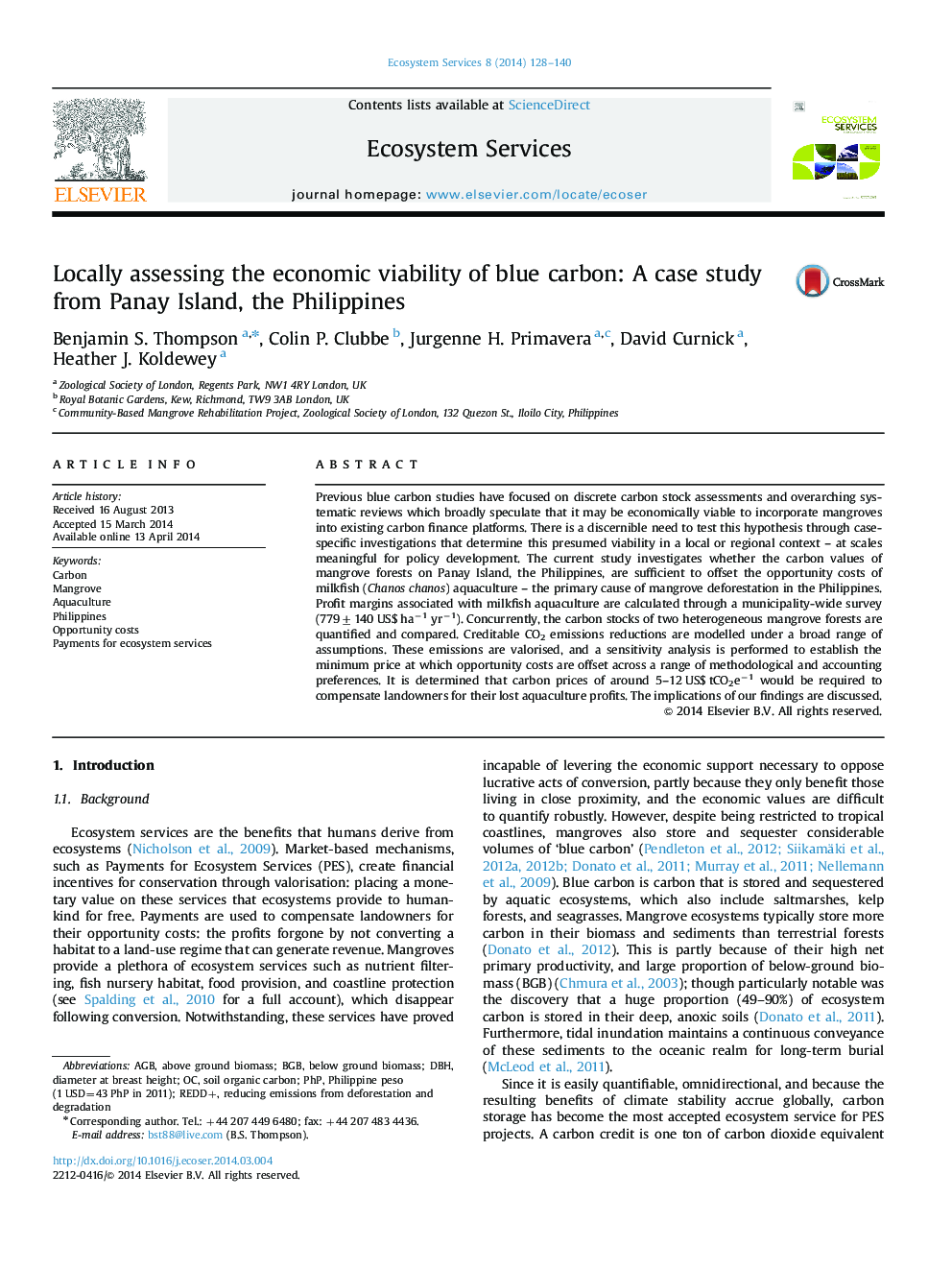| کد مقاله | کد نشریه | سال انتشار | مقاله انگلیسی | نسخه تمام متن |
|---|---|---|---|---|
| 108107 | 161853 | 2014 | 13 صفحه PDF | دانلود رایگان |
• A carbon price of about 5–12 US$ tCO2e−1 is necessary to offset aquaculture profits.
• Currently, this price can only be met on compliance (not voluntary) carbon markets.
• Mangrove carbon accounting is subject to much methodological uncertainty.
• The profitability of milkfish aquaculture is highly variable at 89–4029 US$ ha−1 yr−1.
• Ultimately, the economic viability of blue carbon will be case-specific.
Previous blue carbon studies have focused on discrete carbon stock assessments and overarching systematic reviews which broadly speculate that it may be economically viable to incorporate mangroves into existing carbon finance platforms. There is a discernible need to test this hypothesis through case-specific investigations that determine this presumed viability in a local or regional context – at scales meaningful for policy development. The current study investigates whether the carbon values of mangrove forests on Panay Island, the Philippines, are sufficient to offset the opportunity costs of milkfish (Chanos chanos) aquaculture – the primary cause of mangrove deforestation in the Philippines. Profit margins associated with milkfish aquaculture are calculated through a municipality-wide survey (779±140 US$ ha−1 yr−1). Concurrently, the carbon stocks of two heterogeneous mangrove forests are quantified and compared. Creditable CO2 emissions reductions are modelled under a broad range of assumptions. These emissions are valorised, and a sensitivity analysis is performed to establish the minimum price at which opportunity costs are offset across a range of methodological and accounting preferences. It is determined that carbon prices of around 5–12 US$ tCO2e−1 would be required to compensate landowners for their lost aquaculture profits. The implications of our findings are discussed.
Journal: Ecosystem Services - Volume 8, June 2014, Pages 128–140
